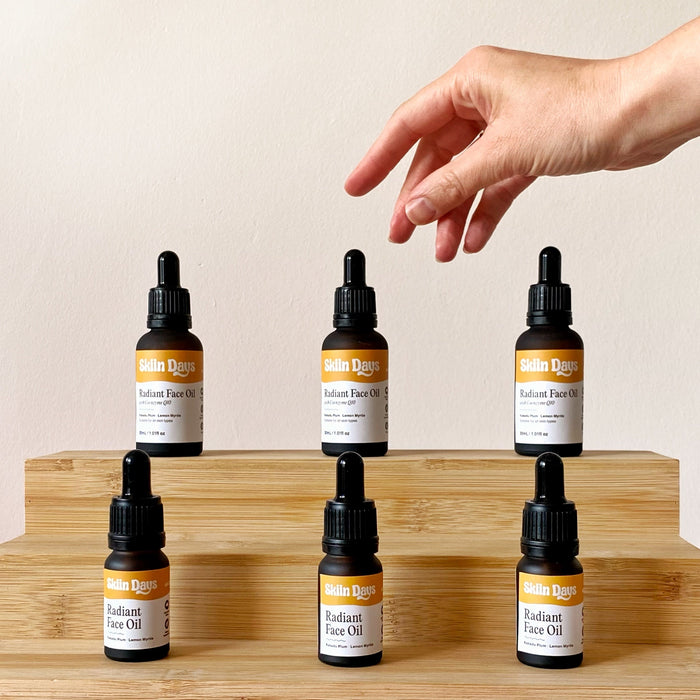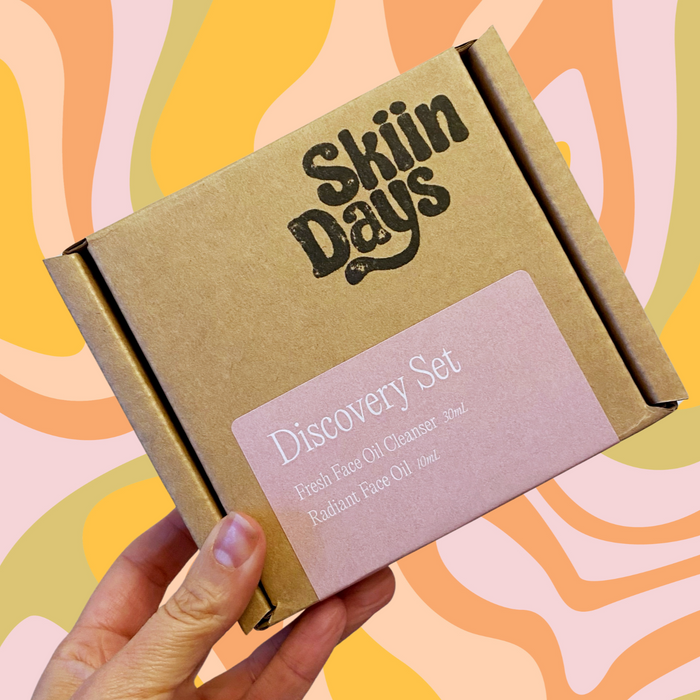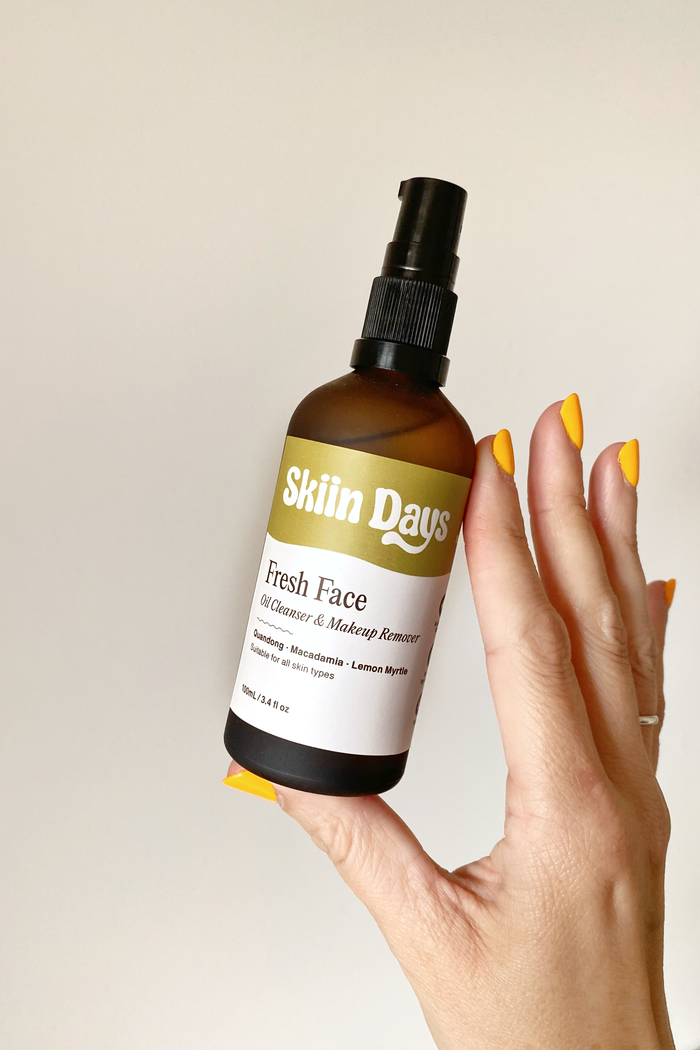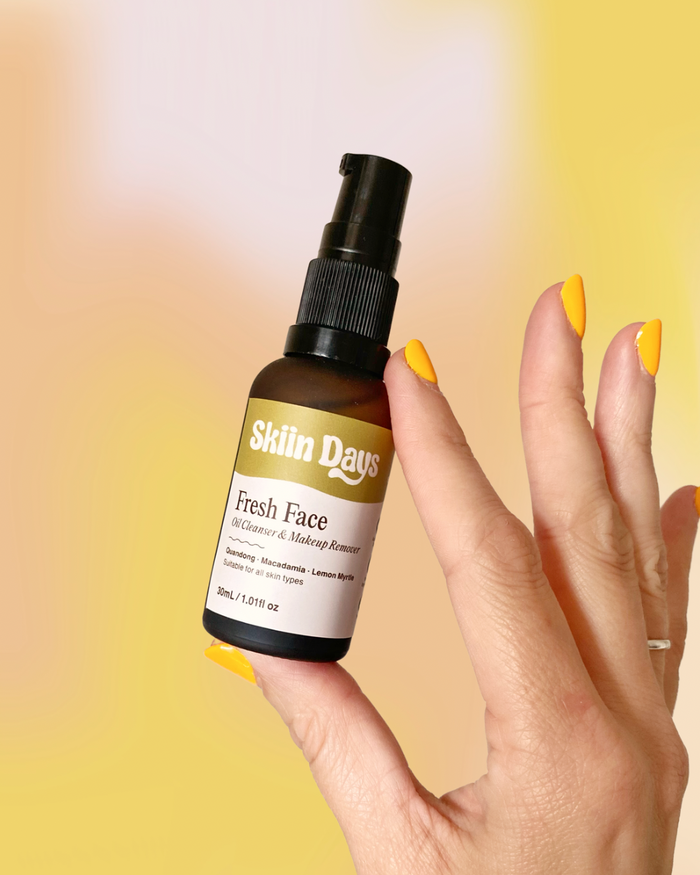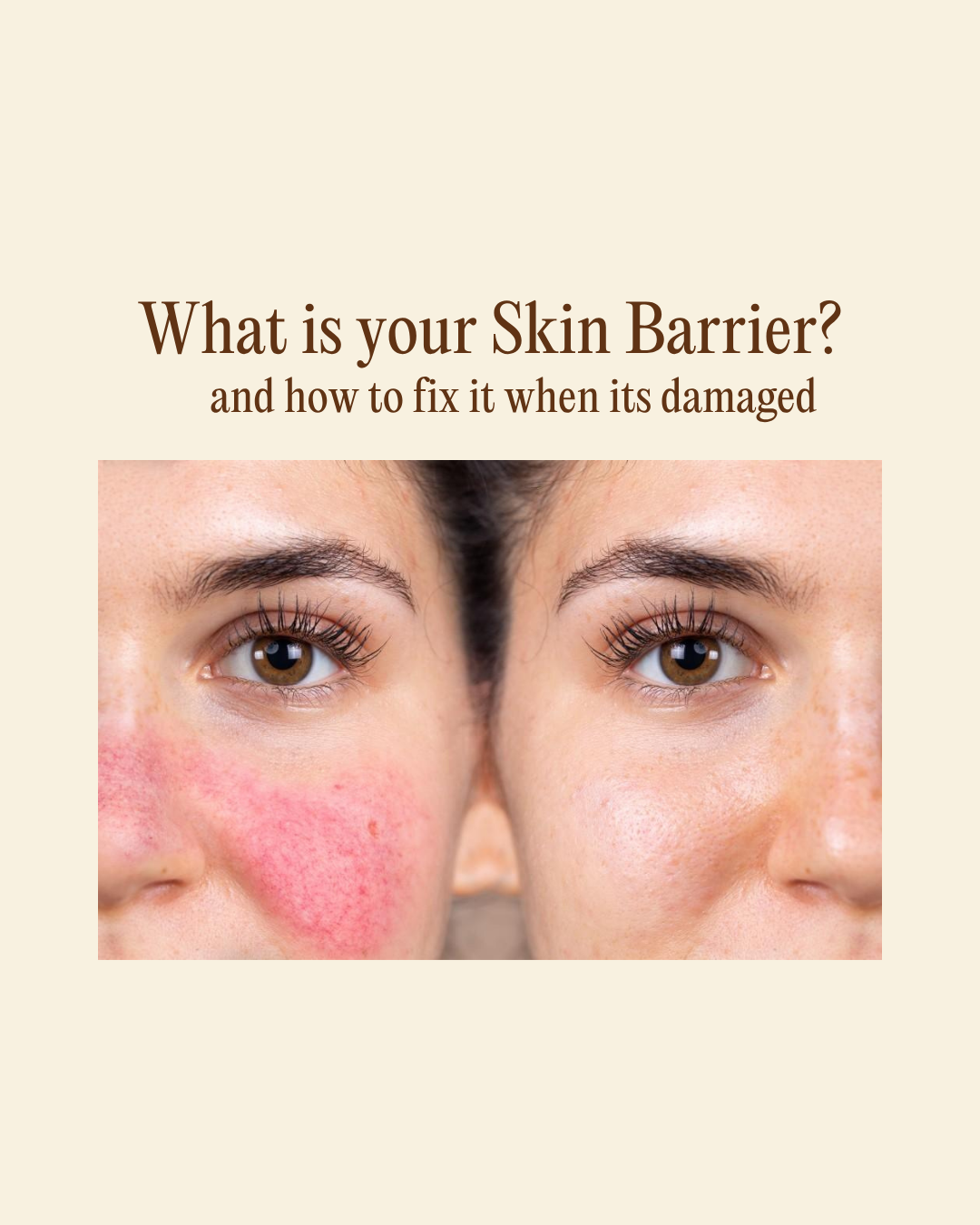

What Is Your Skin Barrier (and how to fix it when it's damaged) 🦠
If your skin has been feeling tight, reactive, red, or just off lately, there’s a good chance your skin barrier is calling for help. You’ve probably heard the term “barrier repair” floating around on social media, but what does it actually mean? And how do you know if your barrier needs repairing? Let’s break it down.
What is your skin barrier?
Your skin barrier is the outermost layer of your skin - a thin, protective shield made up of lipids (fats), ceramides, and skin cells. Think of it like the roof on your house. Its job is to keep the good stuff (moisture) in and the bad stuff (pollution, bacteria, irritants) out.
When your barrier is healthy, your skin looks plump, calm, and hydrated. When it’s damaged, everything feels a little chaotic.
Signs your skin barrier is damaged

A compromised barrier doesn’t always look the same on everyone, but here are some of the most common tell-tale signs:
- Tightness or stinging after cleansing
- Flaky, rough texture
- Redness or increased sensitivity
- Breakouts that seem to appear out of nowhere
- Products that suddenly “don’t work anymore” or start burning
- That dull, tired look where your glow has completely checked out
If that sounds familiar, maybe your skin barrier is compromised
What causes barrier damage?
Annoyingly, it's usually not one single thing. It’s the build-up of habits and stressors that slowly wear it down:
- Over-cleansing or using harsh foaming cleansers
- Over-exfoliating (physical scrubs or acids)
- Too many active ingredients layered together
- Cold, dry weather or indoor heating (or aircon)
- Lack of moisture or skipping your face oil
- Stress, poor sleep, or even hormones (hello, perimenopause)
How to heal your barrier
Good news: your barrier can repair itself, especially with the right care and ingredients.
-
Simplify your routine
Strip things back to basics. No harsh scrubs, no strong actives. Just cleanse gently, hydrate deeply, and lock it in with a nourishing oil or cream.
-
Switch to a gentle cleanser
Look for one that won’t strip your natural oils. Oil cleansers (like our Fresh Face Cleanser *hint hint*) are perfect — they lift away makeup and impurities without leaving skin dry or tight.
-
Feed your skin with barrier-loving ingredients*
These are the heavy lifters when your skin is healing: - Squalane – mimics your skin’s natural oils, deeply hydrating and soothing
- Jojoba oil – balances oil production and strengthens the lipid layer
- Vitamin E – antioxidant protection and repair
- Camellia and Macadamia oils – rich in fatty acids to nourish and smooth
-
Coenzyme Q10 – supports cell regeneration and protects from oxidative stress
* you'll find all these ingredients in our products 😛
-
Seal in hydration
After cleansing, apply a hydrating serum (something with hyaluronic acid, glycerine or vitamin C is ideal once your barrier is calmer), then follow with a face oil to lock everything in.
-
Be patient
Barrier repair takes time, usually a couple of weeks of consistency. The goal isn’t perfection overnight, it’s getting your skin back to feeling strong and balanced again. Remember, good skin takes time - check our our 28 Days blog post here
Beyond your routine: other ingredients that help rebuild your skin barrier
While the ingredients above are your skin’s best friends during barrier repair, there are a few other powerful actives worth knowing about:
- Ceramides – help rebuild the skin’s protective layer and lock in moisture.
- Niacinamide (Vitamin B3) – boosts ceramide production, reduces redness, and strengthens barrier function.
- Panthenol (Vitamin B5) – deeply soothing and hydrating; helps restore elasticity.
- Fatty acids – found in oils like evening primrose, sea buckthorn, or hemp seed; these replenish the skin’s lipid layer.
- Colloidal oatmeal – calms irritation and provides gentle anti-inflammatory support.
- Centella Asiatica (Cica) – speeds up repair and reduces inflammation.
If you’re using products with any of these ingredients, your skin’s on the right track. They all work by strengthening that delicate lipid layer and helping your skin hold onto moisture - which is exactly what a healthy barrier needs.
The takeaway
A healthy skin barrier is the foundation of everything — glow, hydration, smoothness, and even how well your other products work. When you care for your barrier, everything else falls into place.
If your skin’s been feeling stressed or reactive, this is your sign to slow down, simplify, and focus on repair. Your barrier and your future glow will thank you for it.
Looking for more on how you can simplify your routine? Check out our Skinimalism article here
Disclaimer
All content within this blog is provided for general information only, and should not be treated as a substitute for the medical advice of your own doctor or any other health care professional. Skiin Days is not responsible or liable for any diagnosis made by a user based on the content of this site. Always consult your own GP if you're in any way concerned about your health
0 comments
Want to learn more?
By signing up for the mailing list, you'll receive articles (just like this one!), tips, and tricks delivered straight to your inbox.
Skin Days Glow Hub
-

What Is Your Skin Barrier (and how to fix it when it's damaged) 🦠
If your skin has been feeling tight, reactive, red, or just off lately, there’s a good chance your skin barrier is calling for help. You’ve probably heard the term “barrier repair” floating around on social media, but what does it...
-
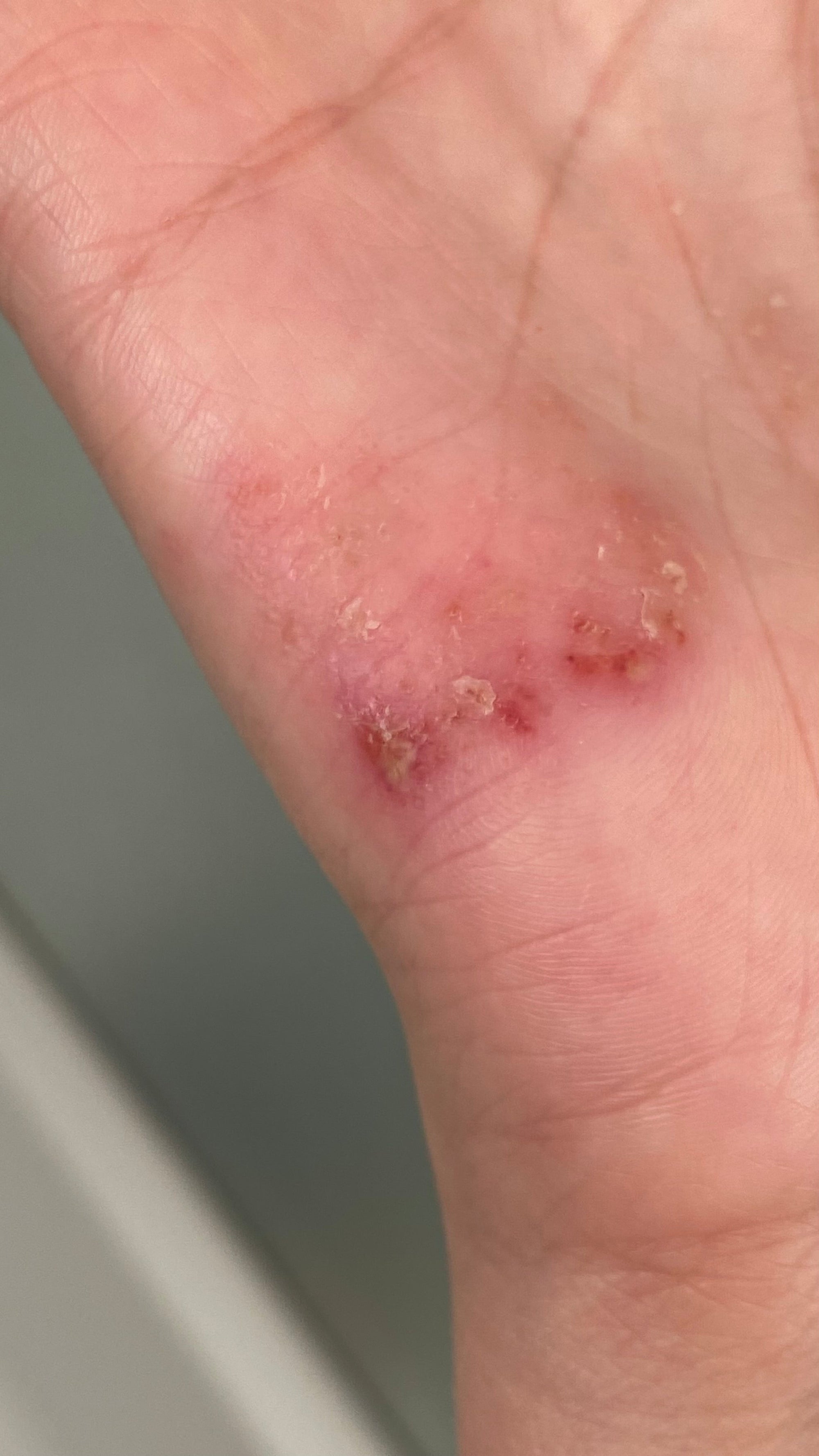
The Balm I Made for My Eczema (And Why You Might Want to Try It Too)
A few days ago, I posted something a little different on Instagram.
No fancy filters. Just me, mid-eczema flare, applying a thick, yellow balm I’d made myself — a blend of zinc oxide and calendula (along with lovely nourishing plant oils and butters) I’ve been quietly testing behind the scenes.
-
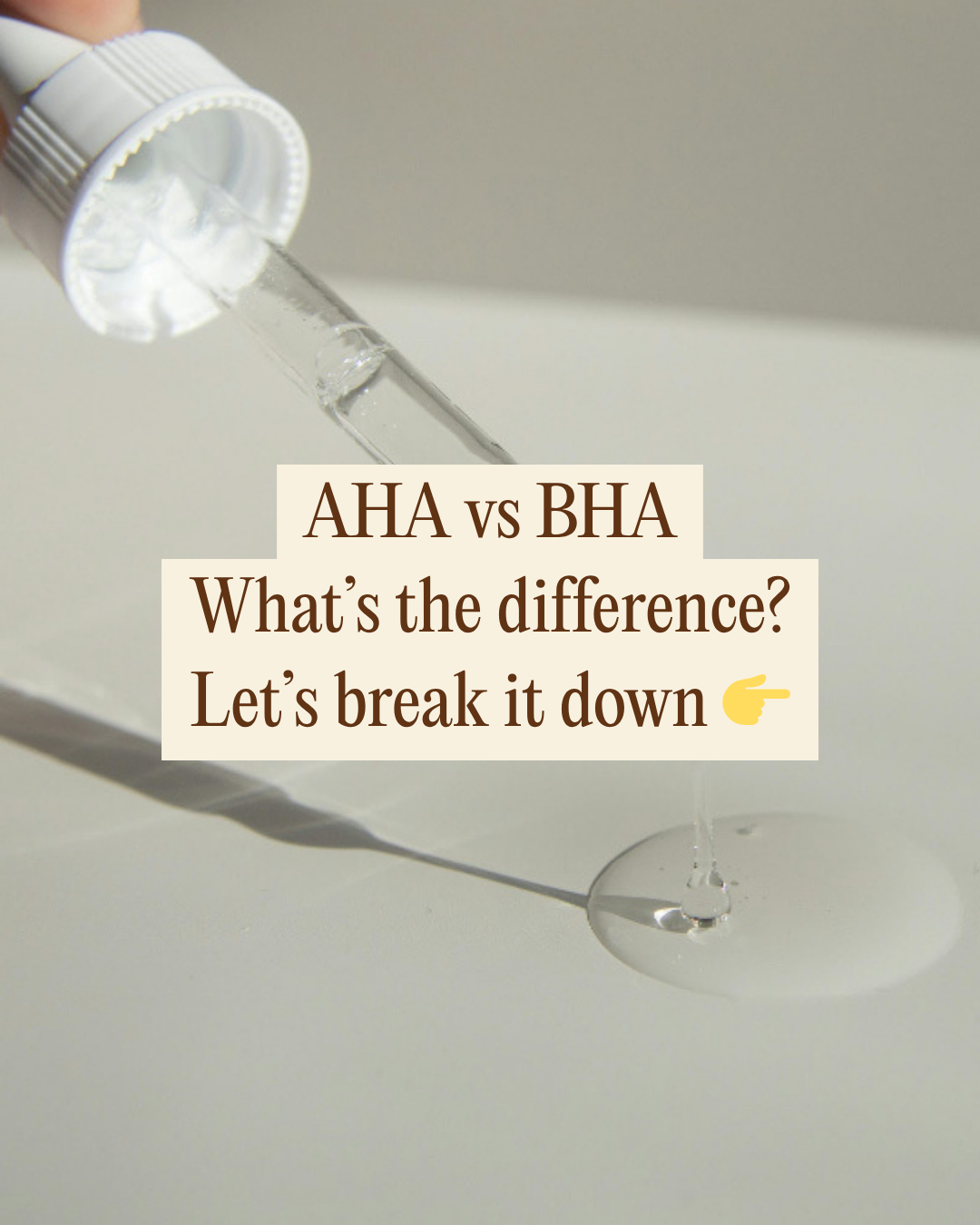
AHAs vs BHAs: What’s the Difference and Which One Should You Use?
AHAs (Alpha Hydroxy Acids) are water-soluble acids made from sugary fruits or milk. They work by dissolving the bonds that hold dull, dead skin cells on the surface. This helps reveal smoother, more even-toned skin underneath.

